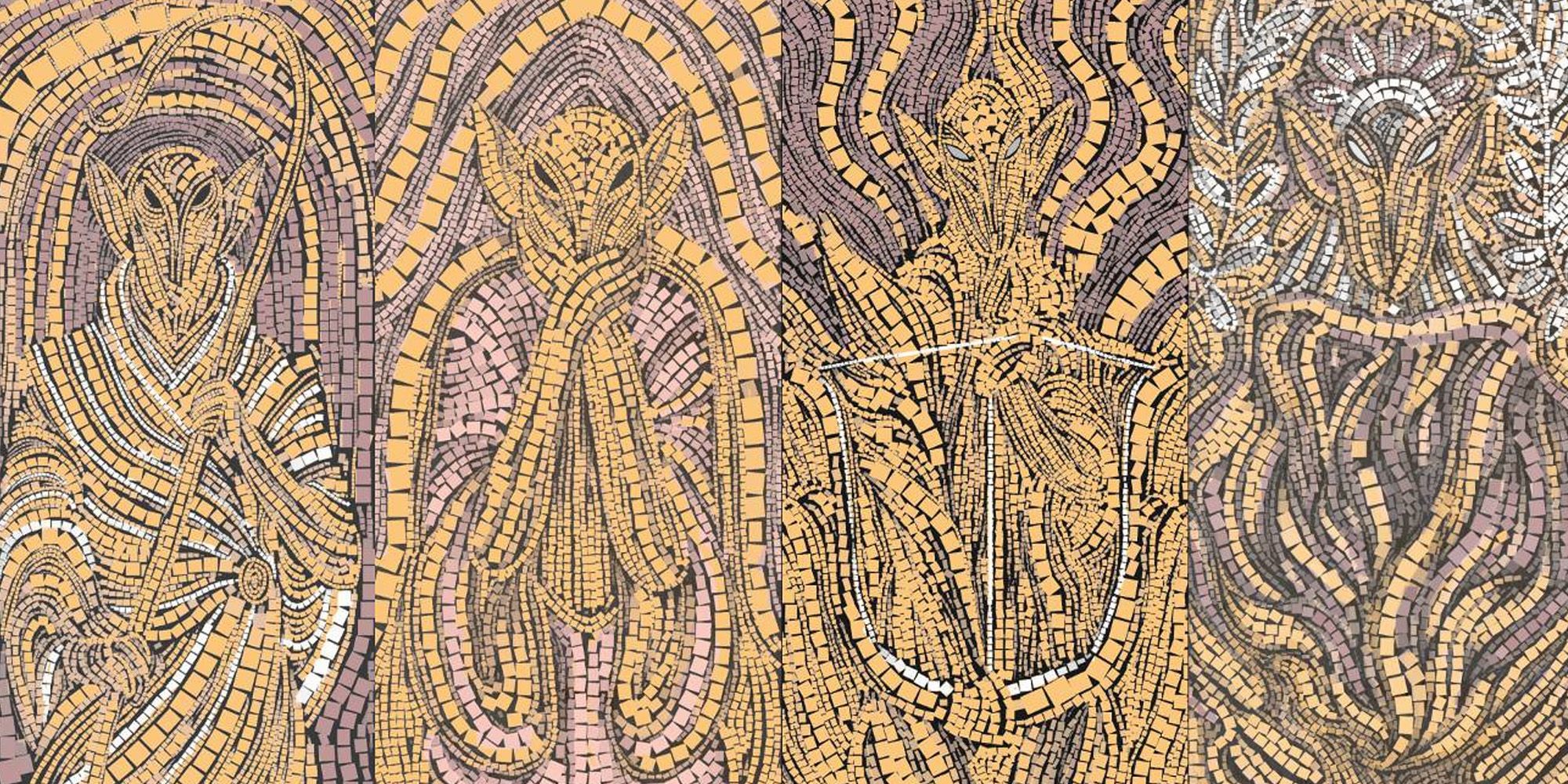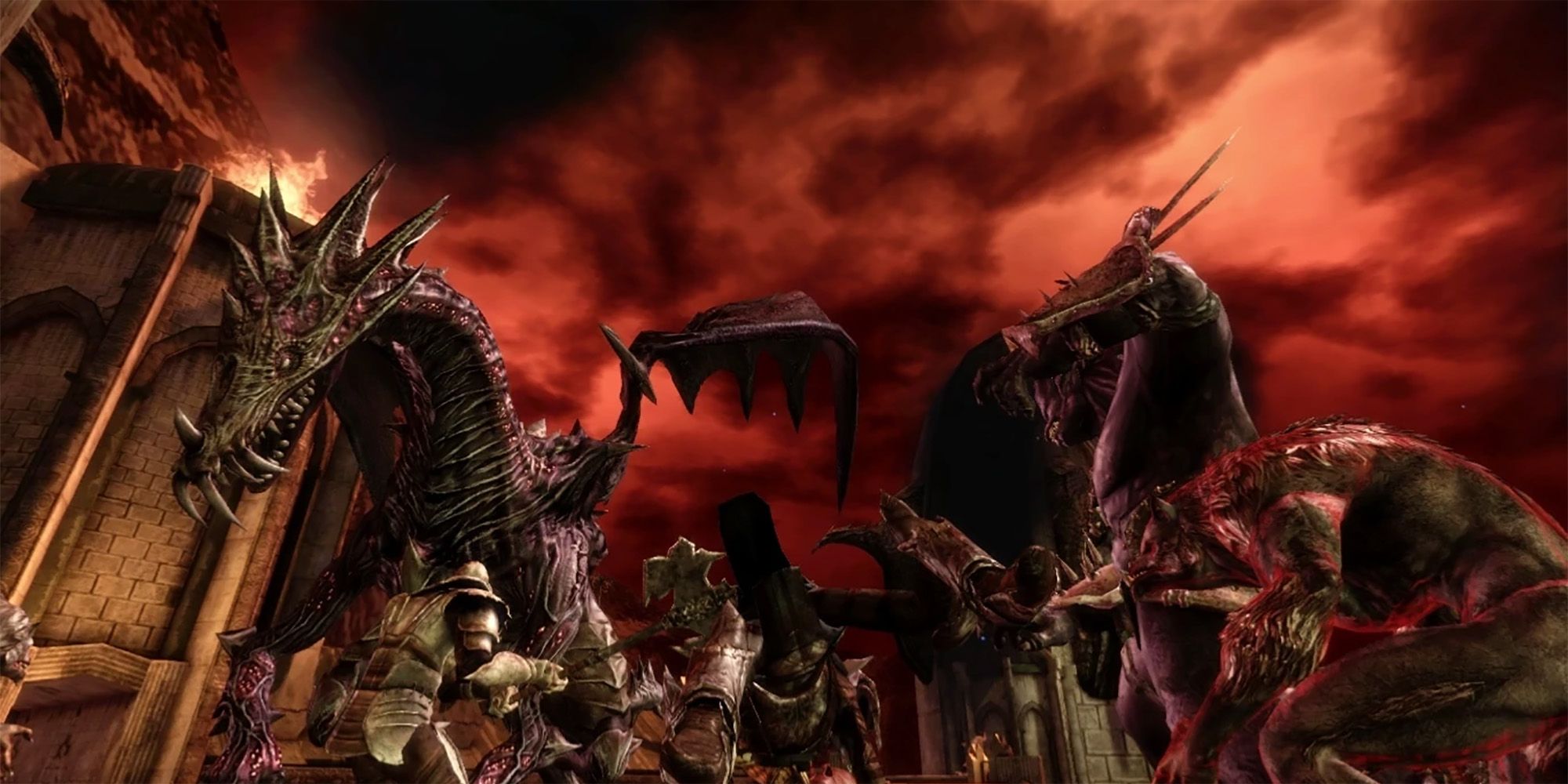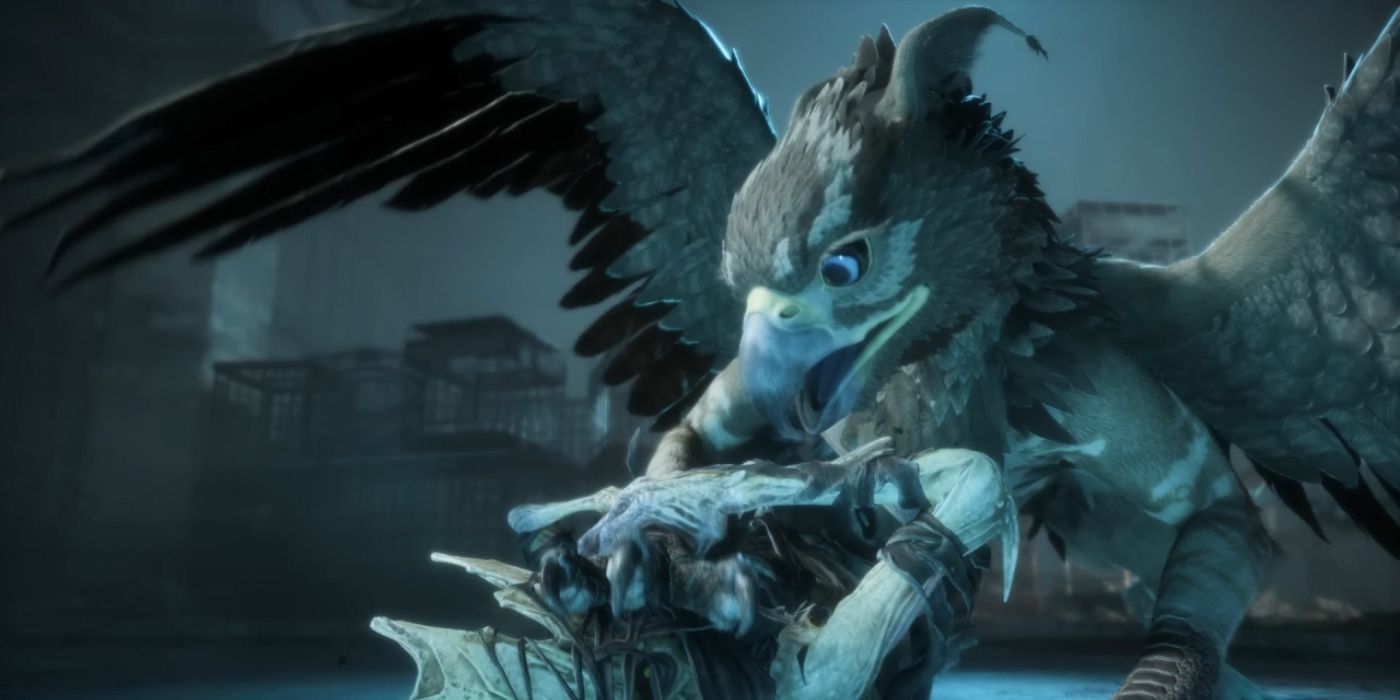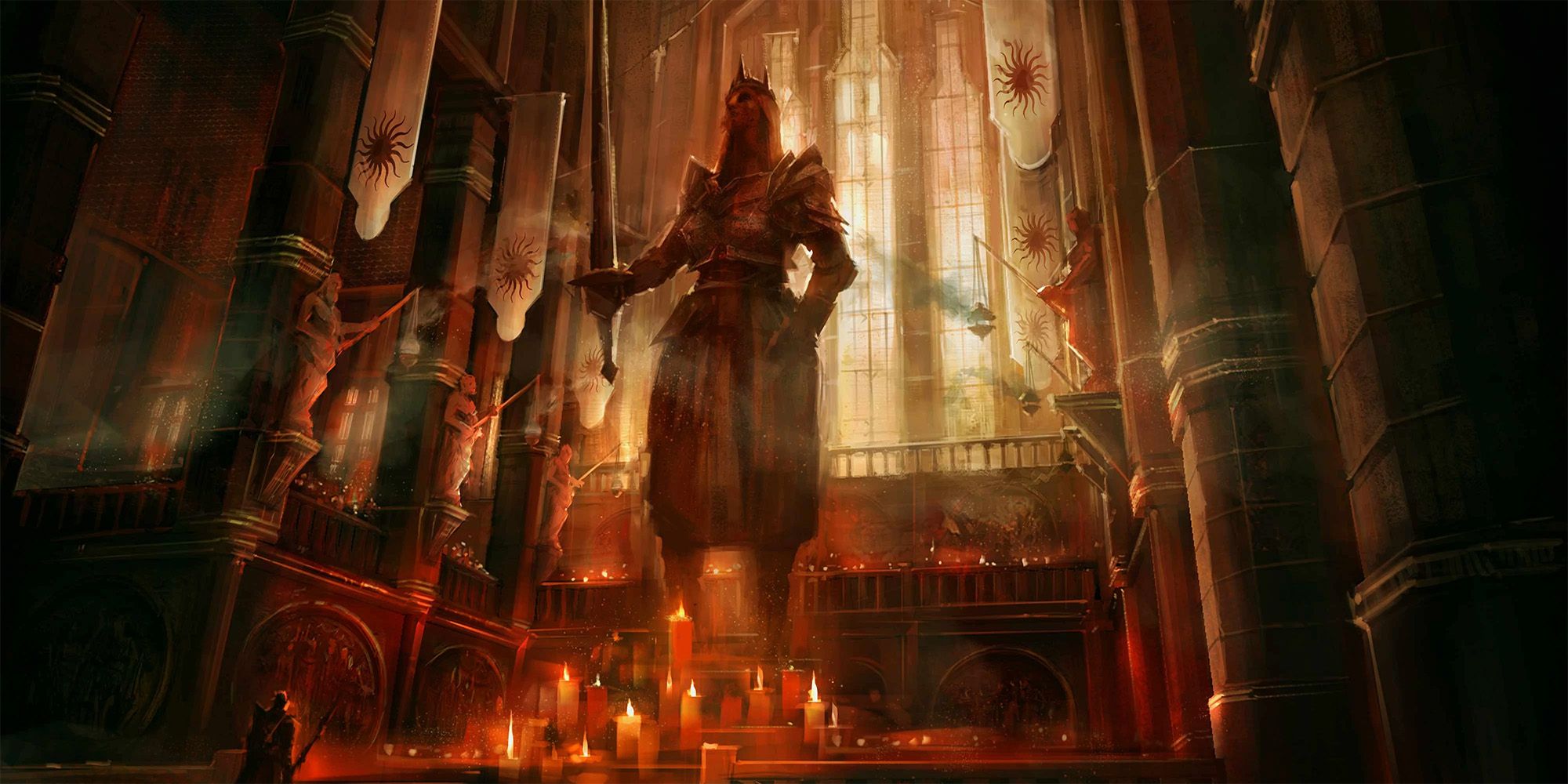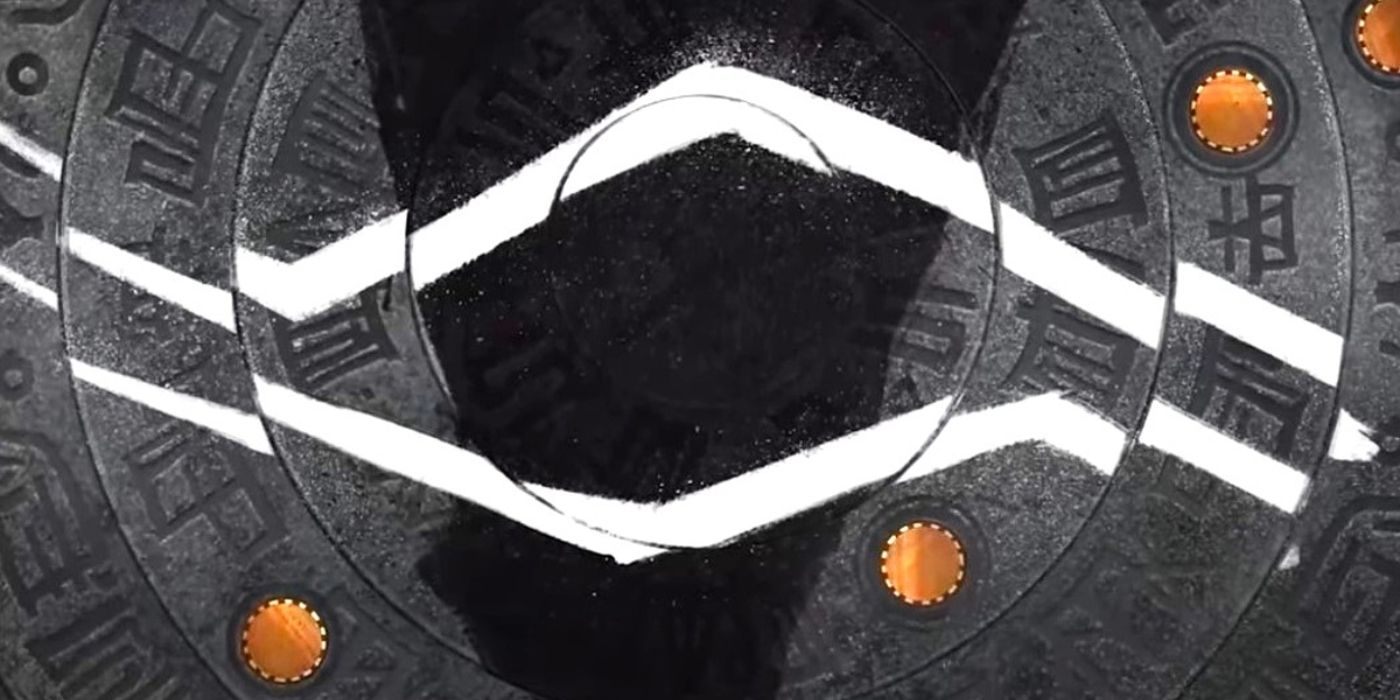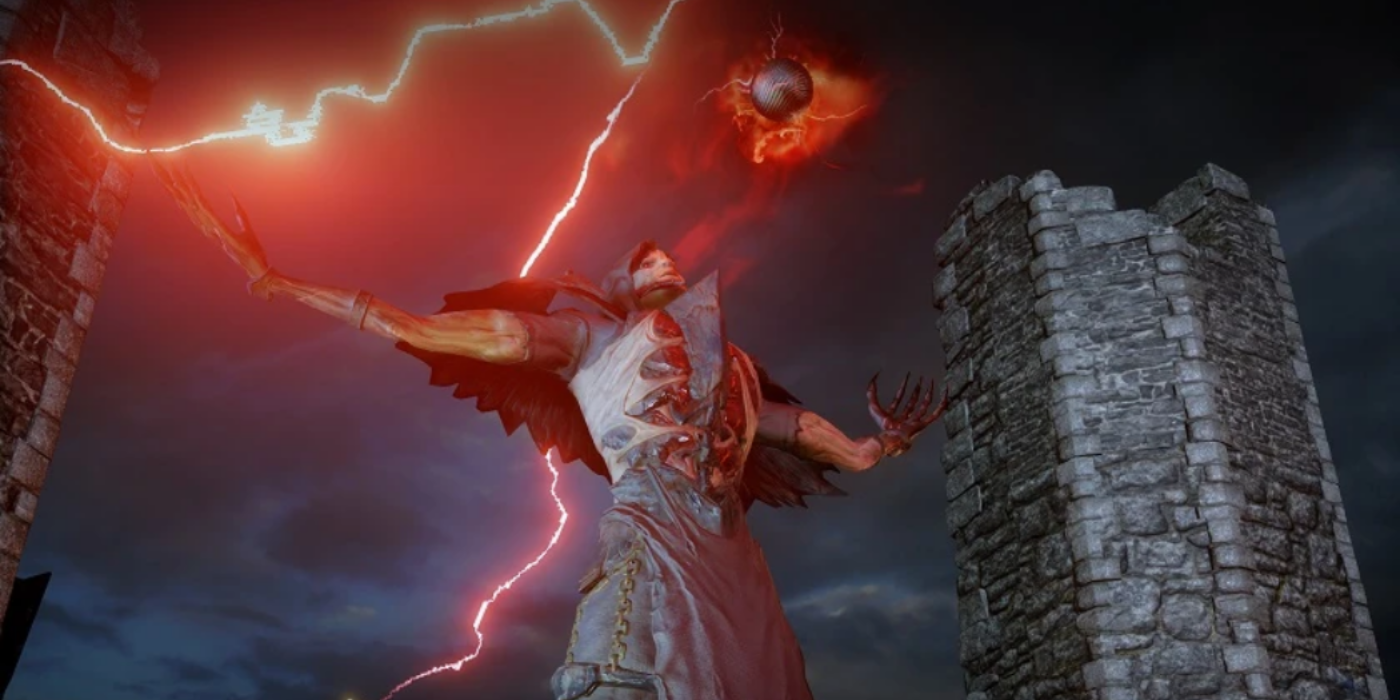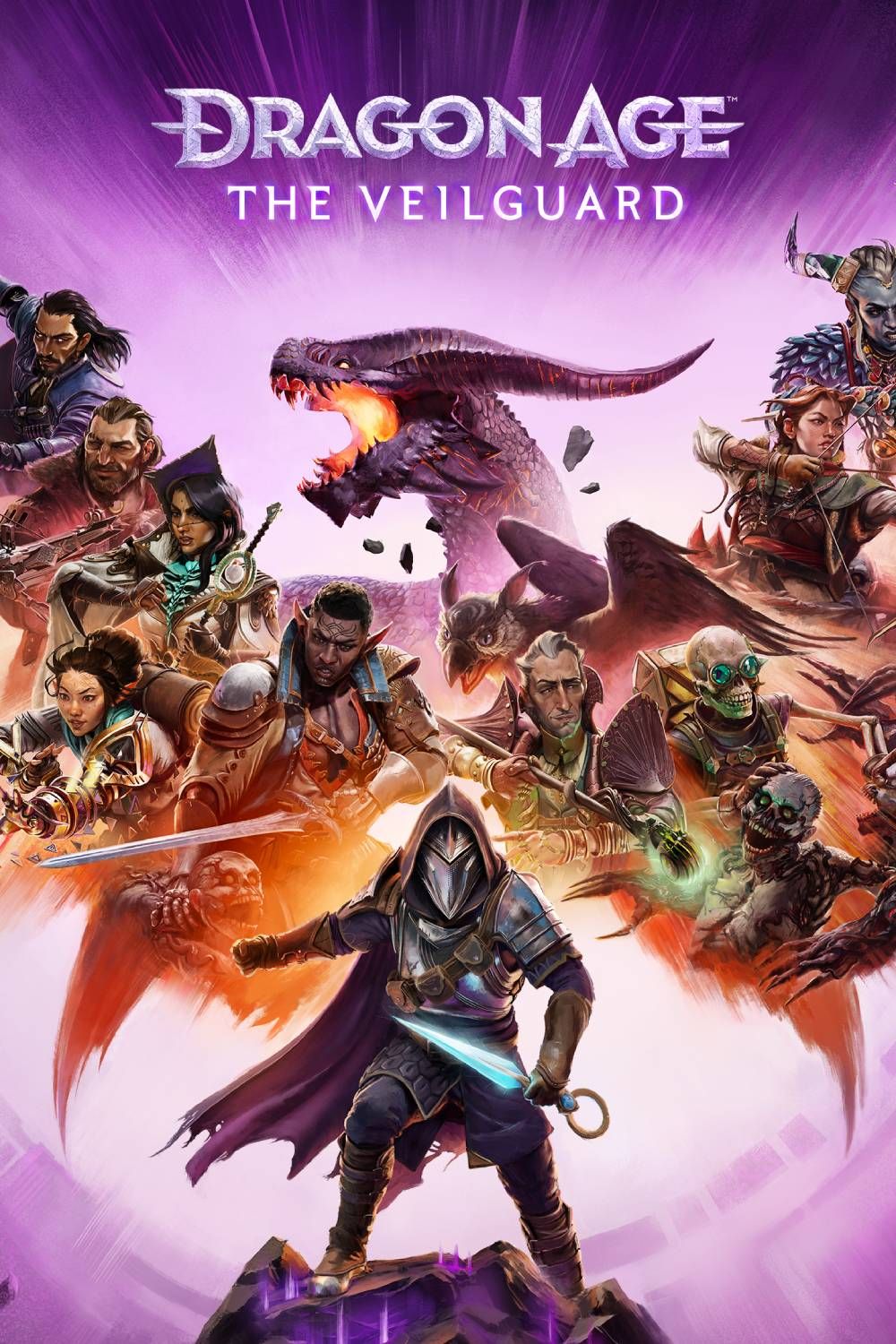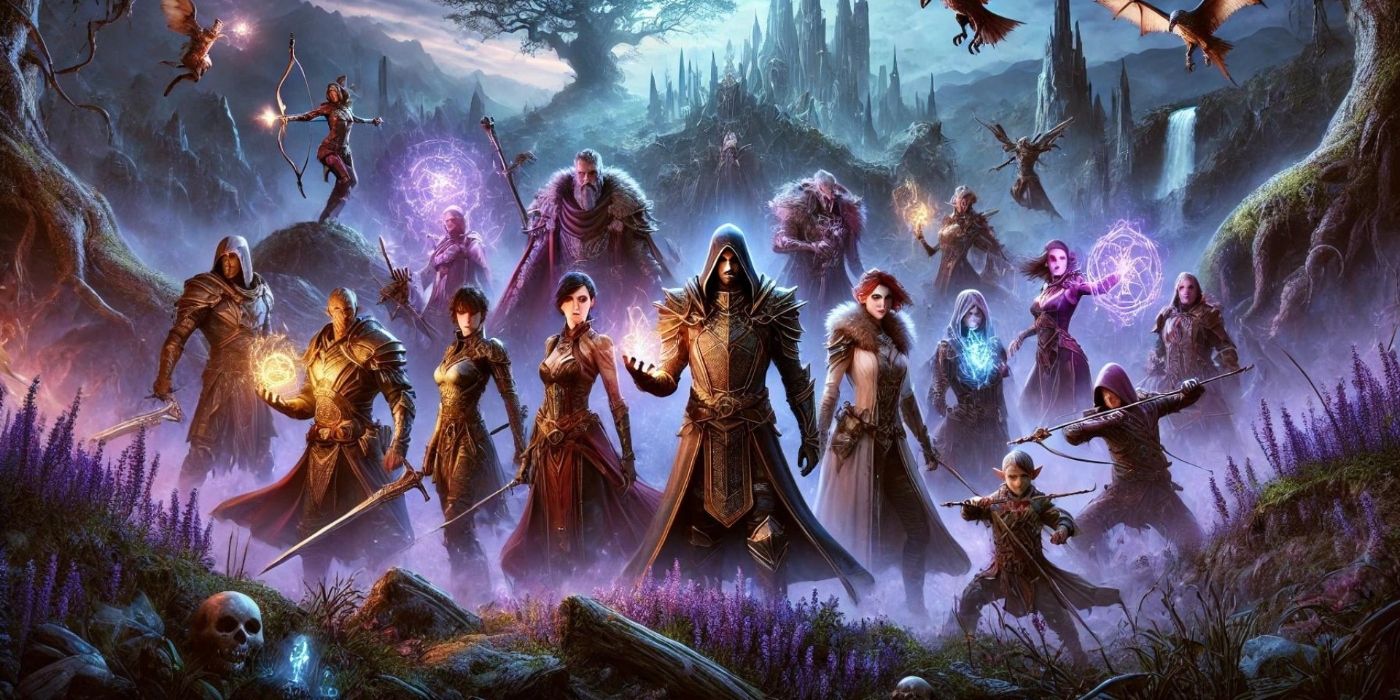
Dragon Age: The Veilguard may be getting criticism or praise depending on which source one looks towards, but one area that it shines in is the new revelations about the lore of Thedas. Its predecessor, Dragon Age: Inquisition made waves by challenging fan notions of what they believed to be true, but Veilguard blows all that out of the water, recontextualizing the exact history of the world through examinations of Solas’ past.
These new bits of information not only change the past of Thedas but also have a big impact on its future. Harding’s storyline alone could craft a new path for the dwarves as they remember their ancient history, and what’s learned about the Elves through the main storyline will forever impact how they see themselves as a people. These are just a few of the things Veilguard changed for the franchise, but there are so many more additions to the lore that need attention now.
10 That Dwarves Cannot Have Magic
Lace Harding’s Abilities Contradict a Series Precedent
One thing that’s been made abundantly clear throughout the four games is that the dwarven people cannot use magic. The exact reason why was unknown until Dragon Age: The Veilguard. In the previous game, The Descent DLC introduced players to a dwarf who was gifted magical abilities by an ancient creature known as a Titan. Now, the dwarf companion, Lace Harding, is gifted with similar abilities, able to manipulate the stone around and create platforms or to defend herself and her friends.
- The Dragon Age franchise previously stated dwarves cannot wield magic.
- In Dragon Age: The Veilguard, Harding is given her own kind of magic.
- This comes from the Titans, the progenitors of the dwarves.
What’s amazing is that as the game develops it leads to the possibility that with time, the dwarves might be able to properly reconnect with their past connection to the Titans, who are in fact the progenitors of their species. This might one day grant more dwarves the ability to wield such magic and create their own system of spellcraft, one that is distinct from the rest of Thedas.
9 There Were More Evanuris
Things Could Have Been Even More Difficult For Rook
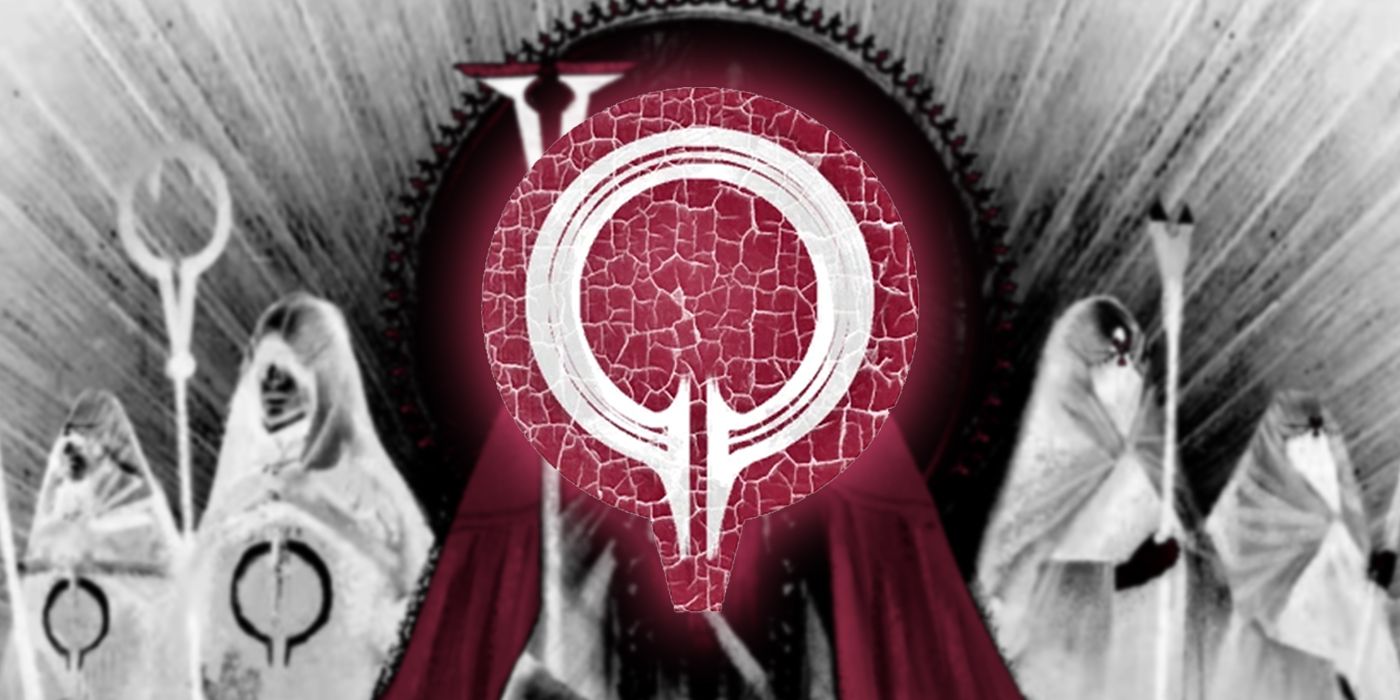
Related
Why Are Mages Hated in Dragon Age?
Mages are widely disliked in the world of Dragon Age, but how did this pervasive hatred come to be?
This was more of a throwaway line Solas gave to Rook when recounting how he toppled a warlord by turning him into a joke, but the prospect was sobering. Fans already knew that, in the Dalish mythology, there were two sets of gods for them: the pantheon they worshipped and forbidden beings known as the Forgotten Ones, who were maligned by the Evanuris. Given the context of what the Evanuris are, it is possible that while some of these Forgotten Ones were just as vile and simply lost their war against the Evanuris, some might have been opposed to them like Solas was.
- There were more Evanuris than just the ones spoken of in legends.
- They likely died due to infighting and were forgotten about.
That being said, Solas’ exact words were that there were more Evanuris; not Forgotten Ones. The implication that the Evanuris had far greater numbers, which likely diminished due to infighting is a terrifying prospect. Elgar’nan and Ghilan’nain almost destroyed the world on their own, had more of the Evanuris survived and broken through, then Rook and Veilguard might not have survived the encounter. It really drives home the idea that history is written by the victors. Or those that are left anyway.
8 How to Kill an Archdemon
Destroying a Great Evil Works a Bit Differently
One thing that became painfully clear when the two Evanuris were freed was that the rules of how everything worked had changed. Suddenly, the Blight, already the biggest threat in Thedas, had become even more dangerous. It mutated, resulting in stronger darkspawn that seemed to act at the behest of their old masters. One major change was how killing an Archdemon worked. Previously, it was believed that only a Grey Warden could permanently slay the creatures, with their corrupted soul passing into the warden and dying with them.
- Previously, Archdemons could only be successfully killed by Grey Wardens.
- With the Evanuris returned, anyone can pull it off.
- However, the Evanuris bolster and defend their prized servants, making them harder to kill.
This soul transfer was likely a result of their masters not being in the same realm of existence. With Elgar’nan and Ghilan’nain returned though, physically destroying an Archdemon became survivable for the Wardens. However, this doesn’t make it any easier, in fact, it is arguably harder to kill an Archdemon now since their masters are there to protect them. The battle against Razikale was evidence enough of this when Ghilan’nain mutated the creature beyond recognition in an attempt to kill Rook.
7 The Fate of the Grey Wardens’ Griffons
These Legendary Beasts Got a Second Chance at Life
The symbol of the Grey Wardens has always been the griffons, mighty beasts that they would bond with and ride into battle. For many centuries though, the griffons have been extinct, leaving the Wardens to fight the Blight on their own. According to historical texts, the griffons eventually died out due to too much fighting against the Blight. Dragon Age: The Veilguard though, gave the griffons a second chance at life, but not without revealing the actual truth of how they went extinct in the first place.
- Griffons were the mounts of the Grey Wardens, but they went extinct.
- It is revealed the Wardens were indirectly responsible for causing their extinction.
During the Fourth Blight, things were going badly for the Wardens. With their griffon numbers dwindling, the First Warden at the time ordered that the griffons themselves be blighted. Perhaps it was an attempt to mimic how the Wardens themselves are partially blighted by the Joining ritual, to better strengthen their surviving griffons. However, this caused the griffons to turn on the Wardens, resulting in the species being wiped out. Only a small clutch of griffon eggs was preserved by the warden who carried out the order to blight their beloved mounts, an act of guilt and grief meant to preserve the species.
6 The Veil’s Exact Purpose
Keeping the Evanuris from Accessing the Fade
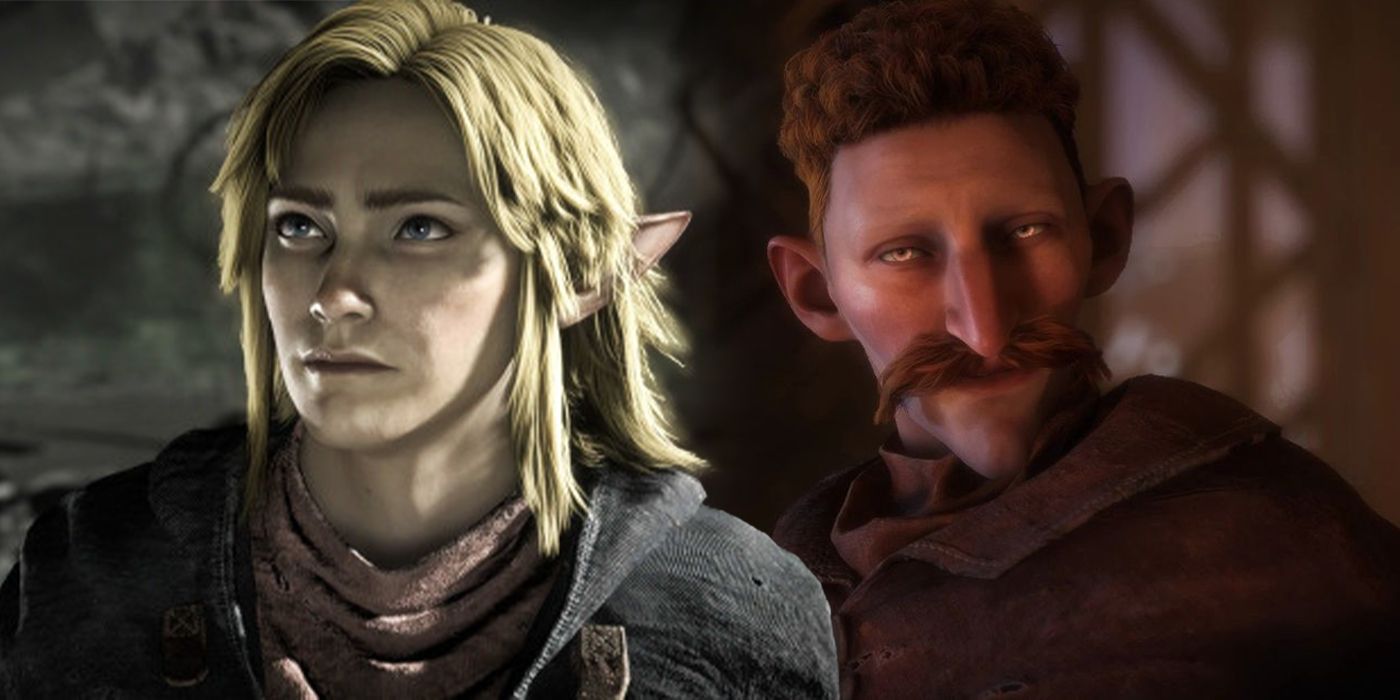
Related
Dragon Age: The Veilguard’s Earliest Mods Are Already Introducing Big Improvements to the Game
Popular mods for Dragon Age: The Veilguard improve the game’s performance, remove purple tones and provide players with Rook character slider presets.
In the Trespasser DLC, it was revealed that Solas created the Veil in an attempt to imprison the Evanuris for their many crimes. This resulted in the physical world and the Fade being sundered from each other, causing a massive catastrophe for Elvhenan, which relied heavily upon the Fade’s magic. The way Solas phrased it made it sound like it was his only option, even if he regretted it.
- The Veil was meant to only contain the Evanuris.
- The ritual Solas used to create it went wrong, resulting in the world’s current state.
As Rook explores the Crossroads though, they can find memories of Solas’ biggest regrets. One of them was the creation of the Veil itself. Solas never intended its effects to be so widespread. His goal was simply to imprison the Evanuris in a place where they could not access the Fade and all its power. In effect, the Veil was only meant to be a bubble the Evanuris were trapped in, not an invisible barrier separating the dreaming and waking worlds. The ritual went wrong, and to Solas’ horror, it ruined the world he knew.
5 The Andrastian Faith Might Just Have Been Disproven
The Predication of a Major Religion May Be Entirely False
As Rook explores Solas’ memories, they discover the true history of the ancient world and how things came to be the way they are today. Among those revelations was the exact origins of the Blight. After learning the truth of its creation, Harding concluded that the Black City was the location where most of the Blight’s power had been imprisoned by Solas. This in turn led to the realization that the Black City, a major focal point in the Andrastian Faith and thought to be the former seat of the Maker, their central god, was actually an Elven structure.
- Rook learns the true origins of the Blight.
- This in turn disproves many of the Chantry’s beliefs about its origins and the Maker.
If true, then it effectively disproves the Andrastian faith — or at least, their interpretation of it. The Blight was not some consequence for the sins of human arrogance, nor was the Black City ever a paradise of the Maker. While the Veilguard did speak about how learning this might simply recontextualize how the Chant of Light is to be interpreted, the reality is that the very foundations of a major religion were just disproved and the ramifications of that are yet to be fully explored.
4 The Executors Are More Than a Foreign Cabal
A Secret Cutscene Reveals New Information
In Dragon Age: The Inquisition, there were War Table missions involving a mysterious group known as the Executors. This strange faction came from across the sea, being one of the first instances of a power foreign to Thedas being identified. At the time, it was made apparent that they were powerful, but probably no more than a massive faction of power brokers, spies, and probably assassins. In short, they weren’t too different from any other secretive cabal.
- The Executors are a mysterious faction foreign to Thedas.
- The secret ending of Veilguard revealed that they have been manipulating Thedas for millennia.
- It is also revealed that they are ready to come to Thedas.
Vigilant players in Dragon Age: The Veilguard could locate three mysterious circular devices across Northern Thedas. Upon locating all three, a secret cutscene will play after the game is concluded. It reveals that the circles are tied to the Executors, using their symbol while a voice narrates how the Executors have been manipulating major historical events in Thedas. The terrifying part is that it implies the Executors have been pulling the strings for thousands of years and that now they are ready to arrive in Thedas for unknown reasons.
3 The Exact Origins of the Old Gods
The Evanuris’ Beginnings Are Revealed
Andrastian legends teach fans that the Blight was caused by ancient Tevinter magisters breaching the Golden City to meet their Old Gods. The exact nature of these gods has been of some debate to fans for years, but Dragon Age: The Veilguard confirmed that the Old Gods never truly existed, but were rather names given to the Evanuris by the ancient magisters. The Archdemons who bore their names were nothing more than high dragons the Evanuris corrupted to grant themselves effective immortality.
- Tevinter’s Old Gods were just different names for the Evanuris.
- The archdemons that bore their names were high dragons corrupted by the Evanuris.
Ironically, the Tevinter magister worshiped Elven deities and then promptly enslaved their people. This becomes problematic though when the Venatori, a villainous Tevinter faction, simply accepts the Evanuris as their new gods because they offer power. It really shows that the faith in the Old Gods was never about devotion, but about a hunger for power.
2 How the Blight Was Created
Of Course Solas Had Something to Do With It

Related
BioWare is Moving On to Mass Effect Without Dragon Age: The Veilguard DLC
BioWare confirms there are no plans for Dragon Age: The Veilguard to receive expansions, with the studio focusing its attention on Mass Effect.
One of the biggest revelations was finally getting a definitive answer about the origins of the Blight. Previously thought to be a punishment from the Maker for humanity trying to breach his Golden City before their time on Thedas was up, it was instead revealed that the Blight was the consequence of a war between the Evanuris and the ancient Titans. The elves were losing the war and in a desperate bid for peace, Solas, at the behest of Mythal, created a lyrium dagger that he used to sever the Titans from their dreams, effectively rendering them tranquil, a passive and emotionless existence in the world of Dragon Age.
- The Blight was thought to be a punishment from the Maker.
- It is instead revealed that the Blight is the severed dreams of Titans.
- Most of it is imprisoned in the Black City.
The Titans’ dreams were then imprisoned in the Black City because Solas knew they would transform into the Blight. Without their connections to the Titans, the dreams became angry, afraid, and violent, willing to destroy anything they came across. It recontextualized what the Blight was — not a source of endless evil, but the consequence of a war crime that has caused Thedas to suffer for many years. What’s even more disturbing though is that most of the Blight is still imprisoned. What fans have seen of it in previous games is only a fraction of its true power.
1 The Origins of the Elves
Their Connection to Magic is Finally Explained
The biggest secret revealed though was how the Elves came into existence. It was revealed that the Evanuris were formerly spirits, who chose to manifest a physical form by harvesting lyrium from the Titans. This not only explained why the Evanuris were so powerful and seemed to retain their existence after their physical form was destroyed but also reveals why all Elves have a unique connection to magic: They are literally descended from spirits.
- The ancient elves were once spirits who achieved physical form.
- This explains the power of the Evanuris.
- Their decision started the war with the Titans.
The revelation also comes with the knowledge that this decision to become corporeal also started the war with the Titans that would lead to their deaths and the creation of the dwarves. The implications of such a feat being possible though raise many questions about whether it can happen again. Most importantly, there is the question of why these spirits wanted to become physical in the first place, potentially leading to an even more ancient secret one day being revealed.
Discover more from reviewer4you.com
Subscribe to get the latest posts to your email.
